Airport Extreme (5th Gen) and Time Capsule (4th Gen) Review - Faster WiFi
by Brian Klug on August 5, 2011 10:22 PM EST- Posted in
- Mac
- Airport Extreme
- Time Capsule
- WiFi
Without taking a peek at the internal FCC photos, I broke out a heat gun and dove inside. I began by opening up my existing Airport Extreme 4th generation. Disassembly still starts by using the heat gun to warm up the adhesive attaching the rubber shoe on the bottom to the metal underside, peeling that off, then removing some screws.
Inside, the Airport Extreme is surprisingly elegant. There’s a single large PCB which serves as a mainboard into which the WLAN card (which is a PCIe x1 slot) plugs.
On that main PCB is a Marvell 88F6281 SoC with an internal ARMv5 Sheeva CPU core clocked at up to 1.5GHz. The Marvell 88F6281 also contains a PCI Express x1 controller, two SATA II ports, a single USB 2.0 port controller, and two GigE ports, not to mention a DDR controller.
Adjacent to the SoC is a Hynix DDR2 SDRAM marked H5PS1G63EFR, which corresponds to a 1 Gb (128 MiB) 400 MHz die.
Switching those ports on the back is the task of a Marvell 88E6350R 7 port GigE switch, with 5 physical interfaces, all of which support up to 10 KByte jumbo frames. Of course, both devices only expose a total of four ports, but in theory there could be five. Those two others are internal for interfacing with the corresponding two ports on the 88F5281 SoC.
There’s also a curious looking button cell 3V battery on the device, which probably keeps the system clock ticking. With no obvious NAND TSOP onboard, I went searching for storage, and found it on an MXIC flash memory marked MX25L12845E which provides 128 megabits (16MB) of flash storage.
But probably the most interesting component on the previous generation Airport Extreme is the WLAN card, which I mentioned earlier is simply a PCIe x1 card that inserts into a small slot on the board.
Getting the cans off the card was easy enough, and underneath revealed two Marvell 88W8366 WLAN SoCs. These enable the previous generation Airport Extreme to support up to 3x3:3 802.11n on both 2.4GHz and 5GHz. Note that with the notation 3x3:3, the first digit is the number of transmit chains, second is total number of receive chains, and third is the total number of data streams supported.
The underside (from my perspective, really this is the top) of the whole affair is home to the device's aluminum heatsink, which consists of pillars topped with thermal pads. Those mate up with the respective chips and carry heat out.
So enough rambling on about components the old Airport Extreme, what about the new one? After taking the Airport Extreme gen 5 apart, I discovered what was changed. It turns out that the new Airport Extreme keeps the exact same revision of the mainboard (and thus the same SoC, 128MB of DDR2, 16MB flash, and GigE switch).
In fact, after I opened up my Airport Extreme Gen 5, I was greeted with the exact same board revision and marking—“820-2622-A copyright 2009.” So what is changed? The fact that Apple designed the board to accommodate a modular WLAN radio card is key.
Instead of the Marvell 88W8366 WLAN solution of the generation 4, the generation 5 switches over to a dual Broadcom BCM4331-based solution. It’s pretty obvious to see all of that too given the markings on the card “BCM94331PCIEDUAL” pretty much gives away all of the high level details—two BCM4331 WLAN stacks over PCIe x1. The markings next to the JTAG headers also give away the fact that there are independent radios for 2.4GHz and 5GHz radio. The 9 in BCM94331 usually accompanies a Broadcom reference design, though the Broadcom website doesn’t have anything posted quite yet about that official reference design, however close it is to this design Apple is using.

The BCM4331 might be familiar if you read our Early 2011 MacBook Pro review, as it’s the single chip solution being used for 3x3:3 WLAN on the notebook. Broadcom is scant on details, but the BCM4331 is a modern single chip 3x3:3 802.11n solution.
Unfortunately my attempts to remove the cans on the new WLAN card were met with failure, as they’re held on with some seriously beefy lead-free solder and the cans acted like an effective heatsink even at my iron’s highest temp.
That said, it turns out I didn’t need to remove the cans at all, as the FCC did the job. Underneath you can see confirmation of what we already knew based on just markings—two BCM4331s, power amps, and three independent RF chains per radio. Unfortunately the FCC photo isn’t high enough resolution to show what power amps are onboard, but I can make out SiGe which has been in other Apple products before.
The only other major difference (which is admittedly pretty noteworthy) is that Apple is including finger stock EMI gaskets (which appear copper colored—maybe BeCu?) alongside the outside of the metal tray which meets up with the inside of the device. There’s careful attention to this shielding around the entire tray, and much more carefully applied foil tape holding it in place near and around the antennas in the 5th generation Airport Extreme. I’m not aware of any huge interference problems with the older generation Airport Extreme, nor does it seem like including some EMI gaskets near the antennas is going to vastly improve the independence of spatial streams, but something warranted this change.
You can see the four antenna PCBs on their own positioned around the edge of the device as well. Again these are unchanged between generations.
That’s really the only change with respect to the 5th generation device. Now what about the 4th generation Time Capsule? Inside, things are much the same as they were in the previous generation. I never owned one, so I can’t compare, and most of the teardowns I’ve seen of it aren’t super comprehensive.


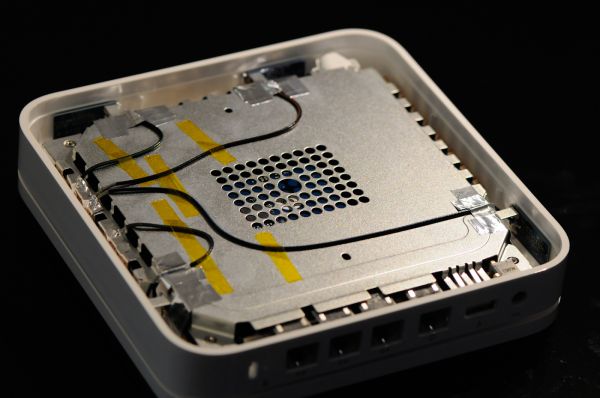
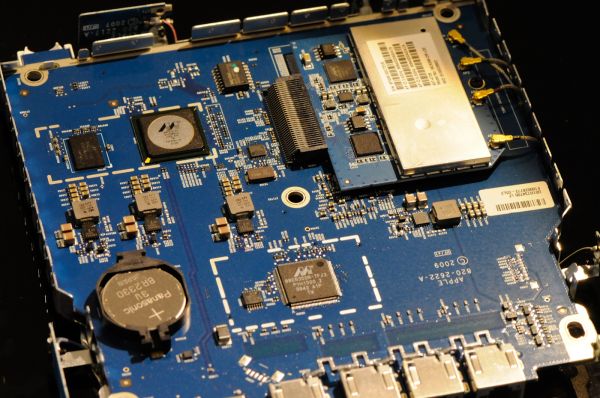
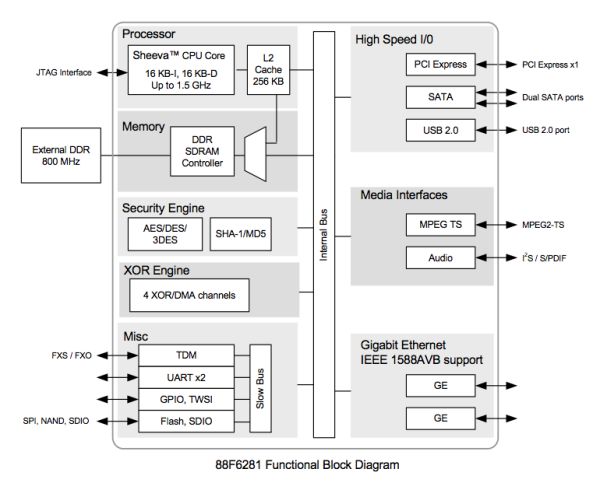
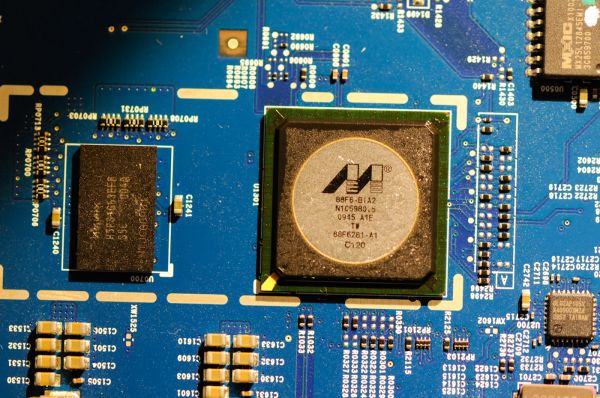
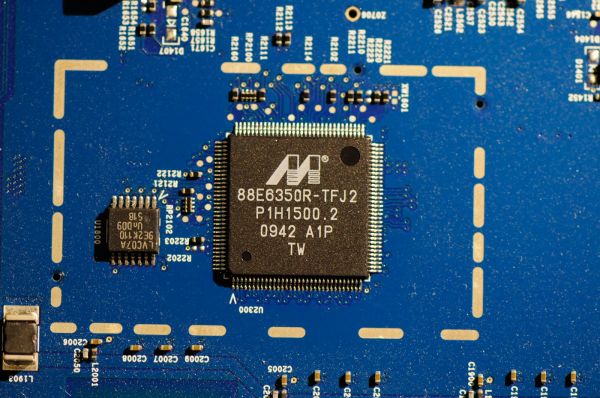

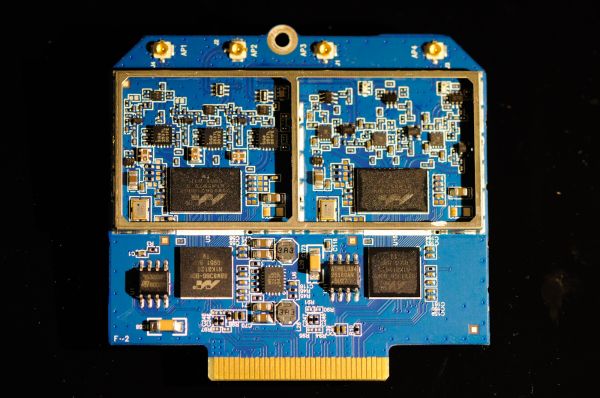






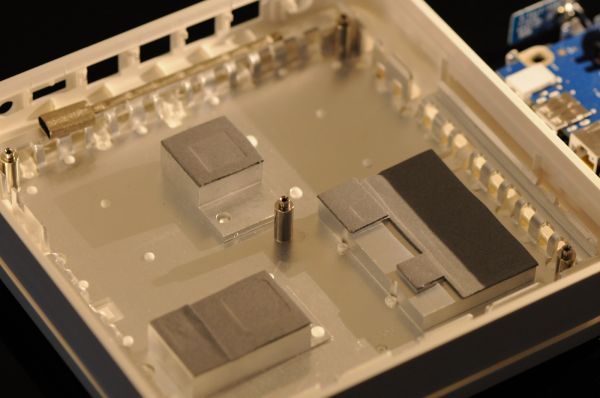
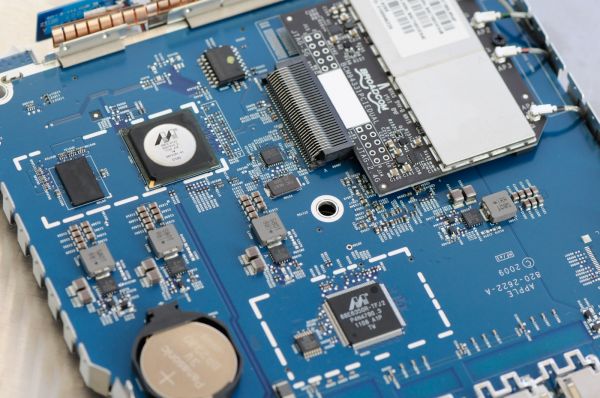
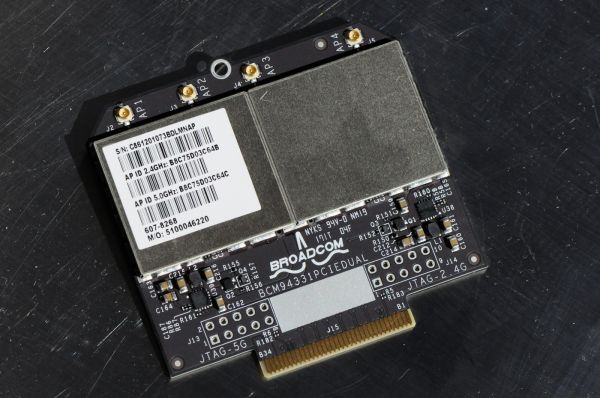
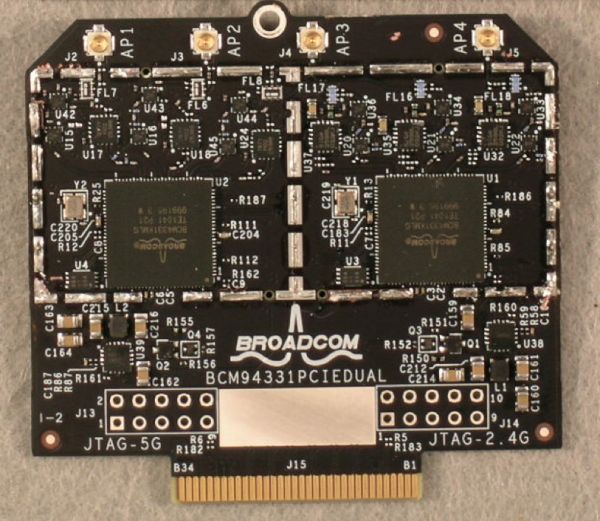
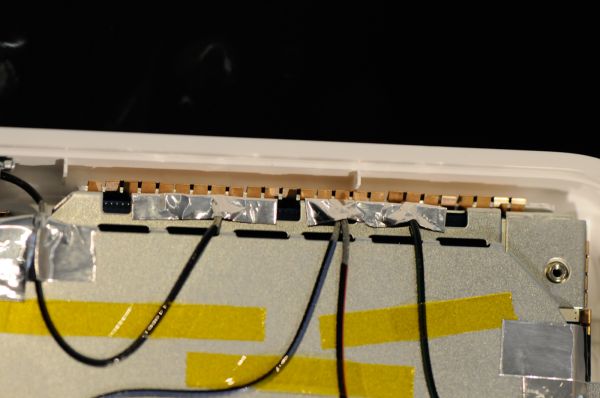














90 Comments
View All Comments
MobiusStrip - Wednesday, August 17, 2011 - link
It would be nice to see a comparison of Airport with other brands of wireless routers.Flachr - Friday, August 19, 2011 - link
I noticed that the 5g Extreme's country field in the airport utiliy is limited to very few countries while all my previous TC's had a long list of countries to choose from.Is Apple now tailoring devices to regions? Is there a way to get the longer list of countries back to select from?
IdBuRnS - Monday, August 22, 2011 - link
I have been using my Airport Extreme (MD031LL/A) for about a week and a half now and I'm loving it. It replaced an old Netgear G router so it's like night and day between the two when it comes to streaming wirelessly.Since I have FiOS I only use it as an AP (FiOS router is in my wiring closet in my garage which puts it out of range for all my devices) but so far I couldn't be happier.
Jack iCaseReview - Friday, August 26, 2011 - link
I don't think the AirportExtreme will ever be a good solution for massive network backups. For small backups it great, but anything too big, and it somewhat slow....Jack
editor - www.iCaseReview.com
MarsMSJ - Sunday, September 4, 2011 - link
I had bought an E4200 to replace a WRT310N that started acting up (going unresponsive.) I had issues where I would get abysmal download speeds on wired. I moved my cable modem to as few splits as possible and that resolved most of the issue (though I argue that my speeds were fast for a year until 2-3 weeks ago and the split had nothing to do with it. Now I get 8-12 where as I had 12-15 for though it's better then the .5 I was getting.)Anyway I noticed right away that when connecting the E4200 my speeds are cut by a 1/2 in comparison to connecting directly to the modem. I upgraded to the latest firmware which not only did not fixed the issue, but broke other features of this router (media server does not work among other things.) Cisco is testing new firmware that won't be available until the end of September if everything goes well.
I found this out because I got an the new Airport Extreme Gen 5 for my side of the house recently. I got curious and switched out the new AE and saw that my speeds were as fast as connected directly to the modem. I spent my Saturday night testing these both by themselves and my notebook and confirmed the E4200 is cutting internet speeds in half. When I hooked everything up the speeds were similar to when I was the only device connected to it.
Right now I have the AE Gen 5 connected to the modem on the other side of the house while the old WRT310 is on my side with my devices wired in (no wireless on my side for the moment.) Wired into the WRT310 which is wired to the AE Gen 5 (we have a 100 foot cable that runs outside along the roof) and using speedtest.net (used them and the same server for all testing) I get 7-9 Mbps compared to the 2-4 on the E4200.
Something is definitely wrong and luckily I got the E4200 at Best Buy on sale (130USD though it's back up to 180) and they have a 45 day return policy for Reward Zone Silver members (Dad bought a mac book pro from them thus spent enough to qualify.) I will be returning it and maybe getting another AE Gen 5 or just waiting it out to see if the new firmware fixes the E4200 download/upload speed issue. (I can live without wireless in my room for month.) If you're debating, now is not the time to buy an E4200.
milan03 - Saturday, September 17, 2011 - link
You can totally share a printer using Airport Express. I've been doing it since the 4th Gen.tekenaar - Monday, October 24, 2011 - link
. . . is: "At this point it isn’t really looking like there’s much different, but exterior appearances can be deceptive.". . . S/B: "At this point it isn’t really looking like there’s much difference, but exterior appearances can be deceptive." ?!
silvalli - Monday, October 24, 2011 - link
Can't find discussion of this anywhere.spaztec - Friday, December 23, 2011 - link
Noticing a fizzing sound coming from my unit during wireless data transfer - any techs here with insight as to which exact component is causing it? I'd check myself, but voiding the warranty for curiosity's sake sounds like a bad idea.